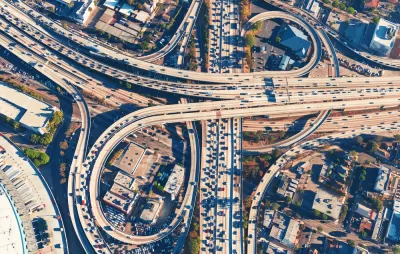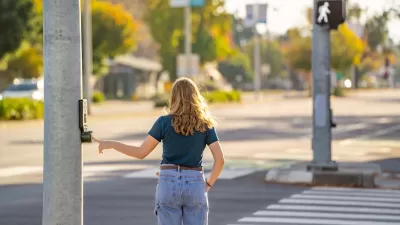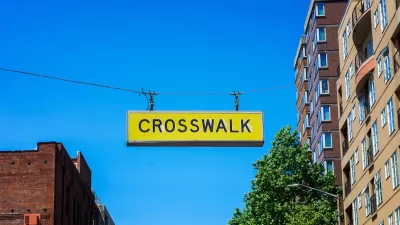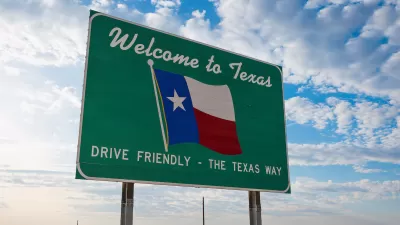Despite its ambitious emissions reduction goals, California continues to spend a majority of transportation funds on car-centric infrastructure.

The Los Angeles Times editorial board takes California state leaders to task on its climate goals, charging that “when it comes to cutting the state’s biggest source of planet-warming emissions — cars, trucks, airplanes and other modes of transportation — the spending doesn’t match the rhetoric.”
The editorial references two recent reports that reveal a lack of progress on the state’s promise to cut vehicle miles driven and reduce greenhouse gas emissions. One report from NextGen Policy shows that “traffic and car dependence has increased in recent years.” The board writes that this is largely because the state “continues to spend the bulk of its transportation dollars to maintain and expand car-centric roads and freeways.”
However, “Instead of doubling down on the existing system that makes it inconvenient and unsafe to travel by bike, foot and transit, California should be spending the bulk of its transportation funding to remake the urban landscape so people have real choices in how they get around.” In fact, only 19 percent of transportation funding has gone to non-driving projects such as public transit, bike lanes, and pedestrian infrastructure.
According to the editorial, “About 70% of the state’s transportation dollars go to road maintenance, as required by the state’s gas tax spending plan.” But, if used strategically, this funding could also support bike and pedestrian infrastructure.
Ultimately, the board writes, “The state needs to radically redesign its transportation system to reduce the need for people to drive everywhere all the time.”
FULL STORY: Editorial: California’s transportation spending doesn’t match its climate promises

Study: Maui’s Plan to Convert Vacation Rentals to Long-Term Housing Could Cause Nearly $1 Billion Economic Loss
The plan would reduce visitor accommodation by 25,% resulting in 1,900 jobs lost.

Alabama: Trump Terminates Settlements for Black Communities Harmed By Raw Sewage
Trump deemed the landmark civil rights agreement “illegal DEI and environmental justice policy.”

North Texas Transit Leaders Tout Benefits of TOD for Growing Region
At a summit focused on transit-oriented development, policymakers discussed how North Texas’ expanded light rail system can serve as a tool for economic growth.

How Community Science Connects People, Parks, and Biodiversity
Community science engages people of all backgrounds in documenting local biodiversity, strengthening connections to nature, and contributing to global efforts like the City Nature Challenge to build a more inclusive and resilient future.

Alabama: Trump Terminates Settlements for Black Communities Harmed By Raw Sewage
Trump deemed the landmark civil rights agreement “illegal DEI and environmental justice policy.”

Dear Tesla Driver: “It’s not You, It’s Him.”
Amidst a booming bumper sticker industry, one writer offers solace to those asking, “Does this car make me look fascist?”
Urban Design for Planners 1: Software Tools
This six-course series explores essential urban design concepts using open source software and equips planners with the tools they need to participate fully in the urban design process.
Planning for Universal Design
Learn the tools for implementing Universal Design in planning regulations.
City of Santa Clarita
Ascent Environmental
Institute for Housing and Urban Development Studies (IHS)
City of Grandview
Harvard GSD Executive Education
Toledo-Lucas County Plan Commissions
Salt Lake City
NYU Wagner Graduate School of Public Service




























